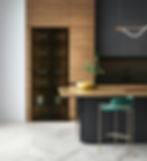Graphic Design vs. Interior Design: Crafting Aesthetics, Function, and Experience
- Sophie Howie
- Apr 8
- 3 min read
In the realm of creative professions, graphic design and interior design occupy prominent spaces. Both fields harness elements of art, aesthetics, and functionality to create environments and experiences that resonate with individuals. Yet, despite their shared focus on design principles, they diverge significantly in medium, scope, and objectives.

The Canvas of Creativity: Medium and Application
Graphic design primarily unfolds in the digital and print arenas, creating visual content that communicates messages across various media. From logos and branding to websites and social media graphics, the graphic designer's canvas is vast, extending to any surface where a visual message can be portrayed.
Interior design, by contrast, operates within physical spaces, transforming rooms and buildings into functional and aesthetically pleasing environments. This discipline involves selecting colour schemes, furniture, lighting, and materials to create cohesive and harmonious spaces that enhance the occupants' quality of life and reflect their personal style.

Functionality Meets Aesthetics: Purpose and Impact
Both fields prioritise the balance between aesthetics and functionality, but their impact is felt differently. Graphic design influences perceptions, communicates ideas, and shapes brand identities, often evoking immediate emotional responses through visual stimuli. It plays a crucial role in marketing, advertising, and visual communication, affecting how we interact with brands and information.
Interior design impacts the physical and psychological well-being of individuals by creating spaces that are not only beautiful but also comfortable, safe, and conducive to specific activities. Whether designing a serene home environment or a productive office space, interior designers consider spatial layout, ergonomics, and the psychological effects of colours and textures.

The Process: Creativity Within Constraints
Both graphic and interior designers navigate a creative process defined by client needs, project goals, and functional requirements. Graphic designers engage with typography, colour theory, and composition, employing software and digital tools to bring their visions to life. Their work often requires adapting to various formats and sizes, from tiny mobile screens to expansive billboards.
Interior designers, meanwhile, must understand architectural principles, building codes, and safety regulations. Their tools extend beyond the sketchpad to include material samples, 3D modelling software, and detailed plans that communicate their concepts to clients, contractors, and architects.

Collaboration and Interdisciplinarity: Working with Others
Collaboration is key in both disciplines. Graphic designers frequently work with marketers, copywriters, and web developers to create cohesive campaigns and products. Their work is an integral part of a larger brand strategy, requiring a deep understanding of the target audience and market trends.
Interior designers collaborate with architects, builders, and artisans to bring their designs to fruition. They must navigate the complexities of construction, timelines, and client preferences, often overseeing a project from initial concept to final execution.

Education and Skill Set: Learning the Craft
The path to professionalism in both fields involves a blend of formal education and practical experience. Aspiring graphic designers often pursue degrees in graphic design, visual communications, or related fields, honing their skills in design software and visual storytelling.
Interior design education encompasses interior architecture, design principles, and project management, often requiring a deeper dive into spatial design, safety standards, and material properties. Many regions also require interior designers to be licensed, necessitating further examinations and qualifications.

In Conclusion
While graphic design and interior design share foundational principles of design, their applications, processes, and impacts diverge, reflecting the unique challenges and opportunities within each field. Both play indispensable roles in shaping our visual and physical worlds, enhancing the way we live, work, and interact. Whether through the click of a mouse or the placement of a chair, designers in both arenas continue to push the boundaries of creativity and functionality.
.png)